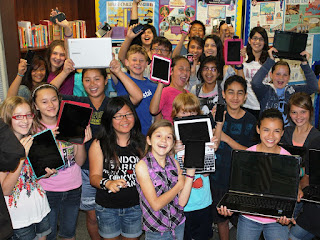General Words:
Harnessing The Potential Of
Mobile Technologies For Children. Mobile technologies need to be leveraged as a
key ally in education reform. This chapter considers ways to harness the
potential of these technologies for
learning. Mobile technologies, combined with high-quality teaching,
authentic assessment approaches, and extended learning beyond the school day,
have unique potential to help children develop important new skills they need
to succeed in the 21st century.
Description:
Based on their ubiquity, low
cost, and familiarity, the anytime, anywhere availability of mobile devices can
support deeper learning opportunities and promote a more integrated 360-degree
learning experience. Mobile technologies also have the potential to reach and
inspire populations of children from economically disadvantaged communities and
those who are geographically isolated. However, there are substantial design
and market challenges to the effective use of these technologies.
Multi sector leadership is needed
to connect disparate efforts by research, industry, and policy professionals.
Through industry innovation and policy incentives, mobile technologies may
support learning in new and profound ways. Throughout this chapter, we identify
a series of studies and “best practices” that show the “pockets of potential”
for mobile learning that already exist globally. We conclude the chapter with
recommendations to transform mobile learning into a force for dynamic
educational impact.
OVERVIEW On November 10, 1969,
the show Sesame Street premiered on open-circuit televisions across the United
States. The first scene featured a Claymation interstitial of “the number 1,” a
major technological breakthrough at the time, followed by the introduction of
furry Muppet Monsters and the now famous opening theme music. Today, Sesame
Street is the single largest informal educator of children in the world,
delighting families in almost 140 countries across the globe.
However, because of the digital revolution
that accelerated at the turn of the 21st century, children need not wait for a
daily program broadcast to learn their basic literacy, math, and social skills.
They can now watch, pause, replay their favorite parts, and keep a personalized
playlist on chocolate barsized devices that they keep in their pockets. As
mobile devices become central parts of children’s lives, the evolution of
Sesame Street and all the media it inspired suggests a powerful opportunity to
reinvent education for a digital age.
This chapter sets out a framework
to take better advantage of the educational power available to educators who
seek to leverage the potential of mobile technologies. Mobile devices are fast
becoming ubiquitous media technologies in children’s lives in the United States
and globally. More than half the world’s population owns cell phones, with the
number of mobile cellular subscriptions worldwide estimated at 4 billion at the
end of 2007 (Roberts, Foehr, and Rideout, 2005; Michael Cohen Group, 2007;
International Telecommunication Union). And it’s not just phones that are
rapidly evolving.
In the past few years, Nintendo’s
DS has become the fastest-selling handheld gaming device in history; major toy
companies have shrunk their gaming systems into miniature versions; and Apple
redefined media players with the advent of the iPod. Since 2005, ownership of
portable digital music players, digital cameras, and cell phones experienced
double-digit growth among children aged 4 to 14 (NPD Group, 2008).
Conclusion:
The Center on Media and Child
Health predicts that over half (54%) of 8- to 12-year-olds will have cell
phones within the next three years. Devices such as mobile phones, iPods, and
even handheld videogame consoles have features that can uniquely help children
develop important skills they’ll need to be literate, to cooperate, and to
succeed in the 21st century. We must not let this opportunity slip away.
You Also Like: Mobile Technologies Are Now An Integral Part Of Education.












No comments:
Post a Comment